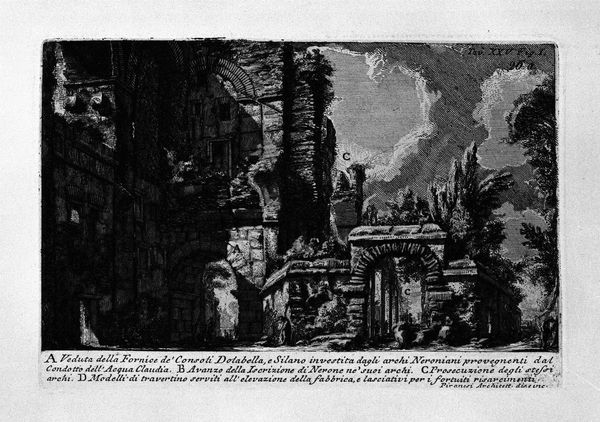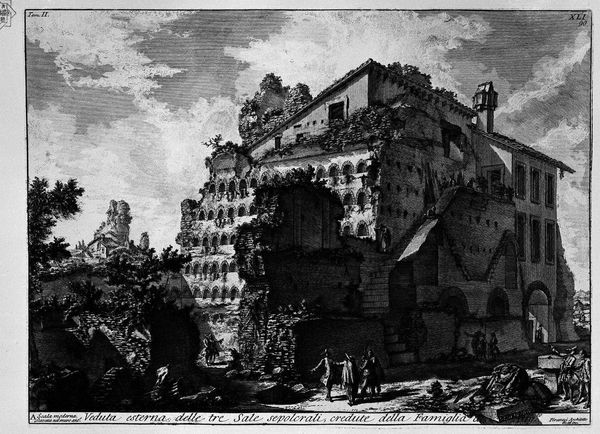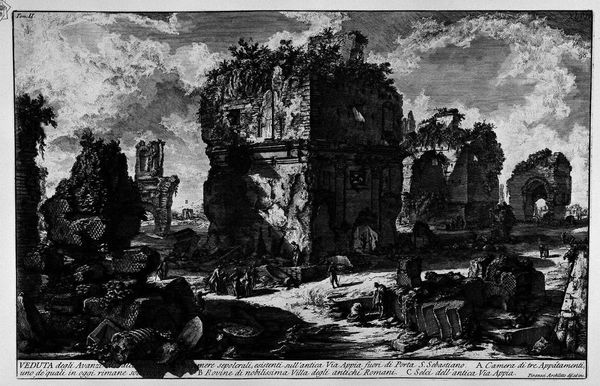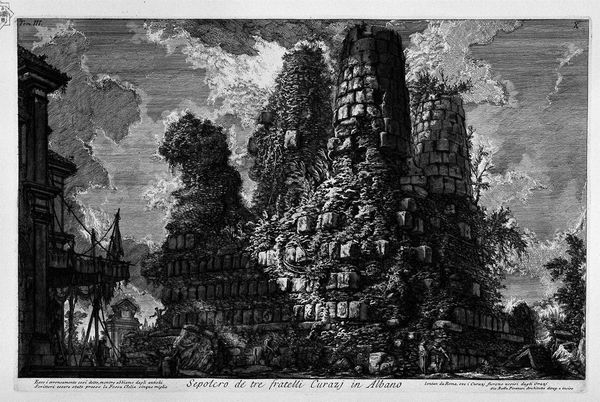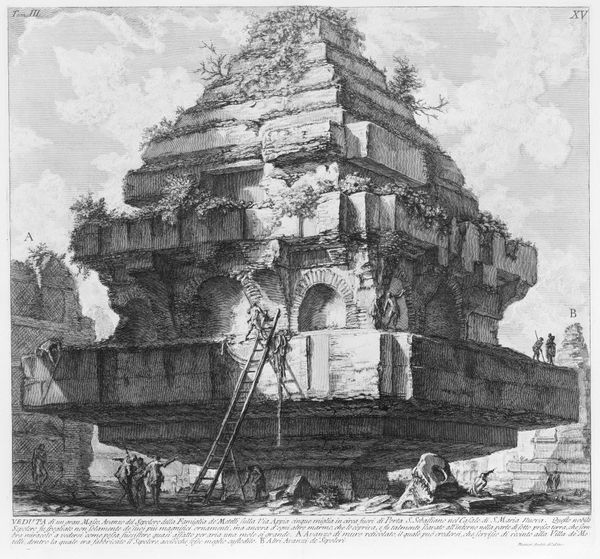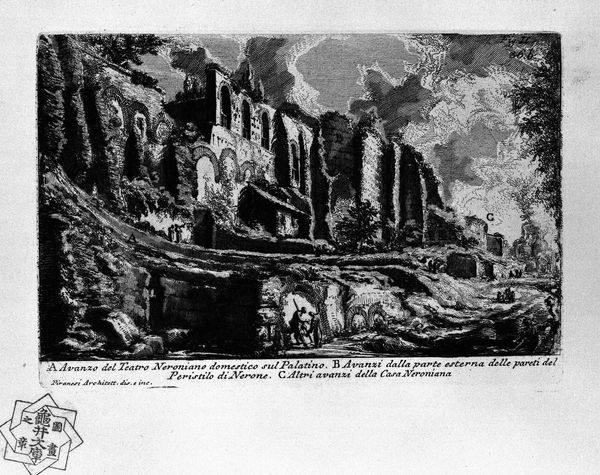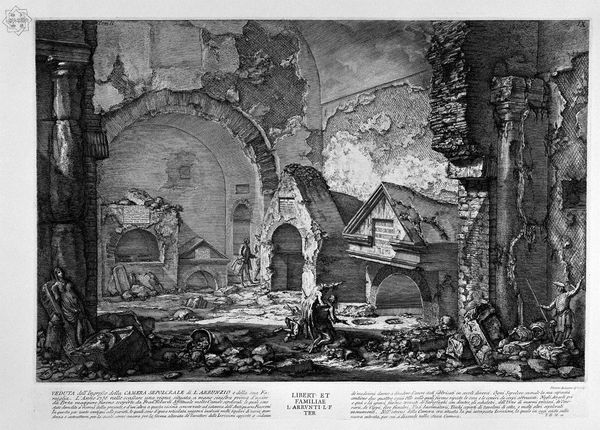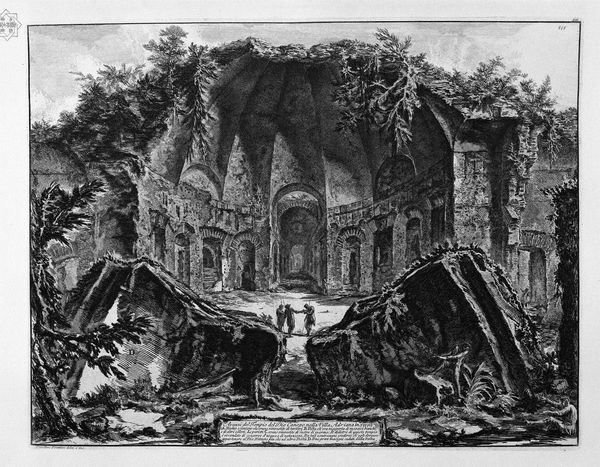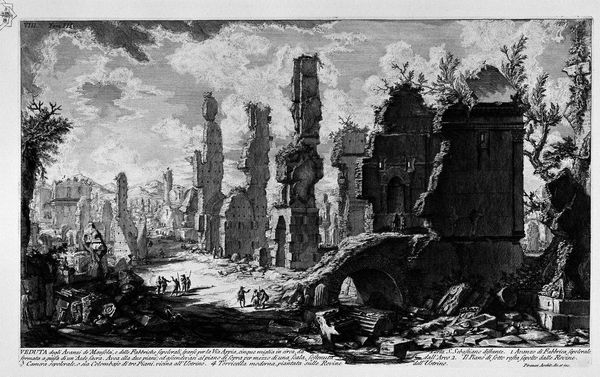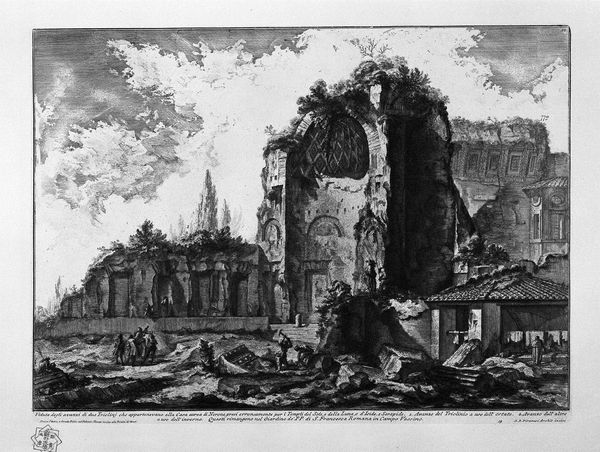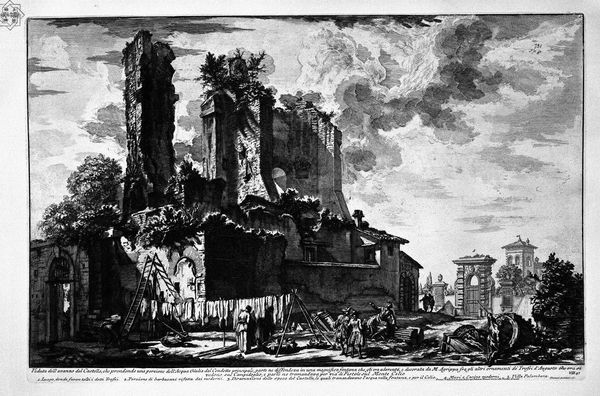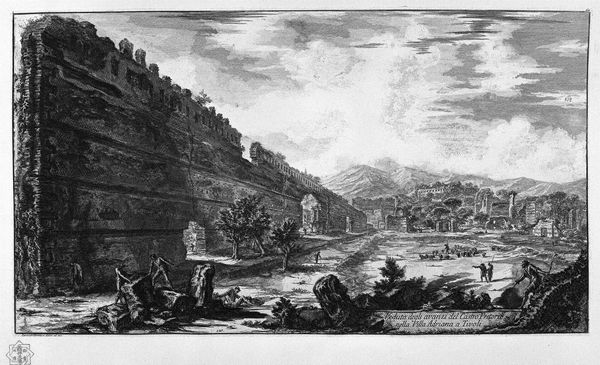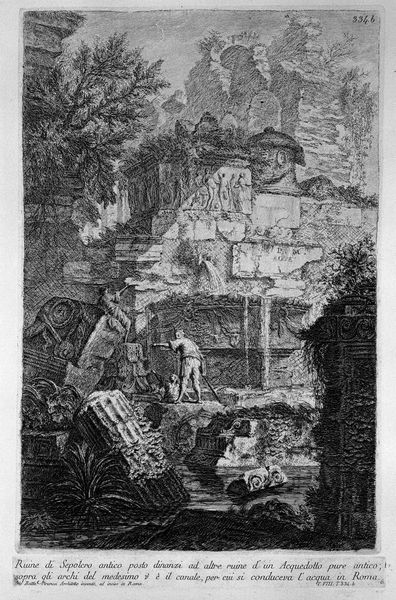
The Roman antiquities, t. 2, Plate XXVIII. Plan, and elevation cross-section of the Tomb of the Scipios. 1756
0:00
0:00
drawing, print, etching, engraving
#
drawing
# print
#
etching
#
landscape
#
romanesque
#
cityscape
#
history-painting
#
engraving
#
monochrome
Copyright: Public domain
Curator: This is Giovanni Battista Piranesi’s 1756 etching, "The Roman antiquities, t. 2, Plate XXVIII. Plan, and elevation cross-section of the Tomb of the Scipios." Editor: It’s stunning! Such intricate linework for a depiction of decaying grandeur. The way the plants intertwine with the stonework—there’s something captivating in that relationship between nature reclaiming architecture. Curator: Indeed. Piranesi's series wasn't just documentation; it was instrumental in shaping perceptions of Roman antiquity. He presented these sites as grand spectacles, deeply influencing architectural and artistic movements. It's a history-painting presented through landscape, and cityscape elements. Editor: And think about the physical labor involved in creating this image, from quarrying the stone for the tomb itself to Piranesi's meticulous work with the etching tools. It really gives you a sense of the amount of time and human effort, visible within the work and also behind it. Curator: Absolutely, and consider how this print then circulates, making Roman grandeur accessible to a wider audience. It turns a symbol of power accessible, a power historically held by a privileged few and now mediated by print culture. It’s democratization of access, even to death. Editor: The monochrome amplifies the material contrasts too. The hard, geometrical Roman constructions juxtaposed with the fluid shapes of uncontrolled plant life gives a lot to think about. The sharp man-made shapes against this creeping organic matter. What do you make of that relationship? Curator: I see it as Piranesi staging a visual dialogue about time, a historical moment. He captures both the remnants of a powerful empire and the persistent forces that inevitably transform it, and of course its effect on social memory. Editor: Precisely! You feel the weight of the stone but also sense it being consumed by time, reduced back to its basic materiality. An interesting statement about the temporality of empire when rendered by relatively humble material. I never thought about that when observing it the first time! Curator: Piranesi’s choices about representation, perspective, and dissemination were definitely considered. Understanding these details lets us engage with historical contexts and societal perceptions of antiquity more richly. Editor: Yes, that is a great way of capturing Piranesi’s technique, thanks!
Comments
No comments
Be the first to comment and join the conversation on the ultimate creative platform.

